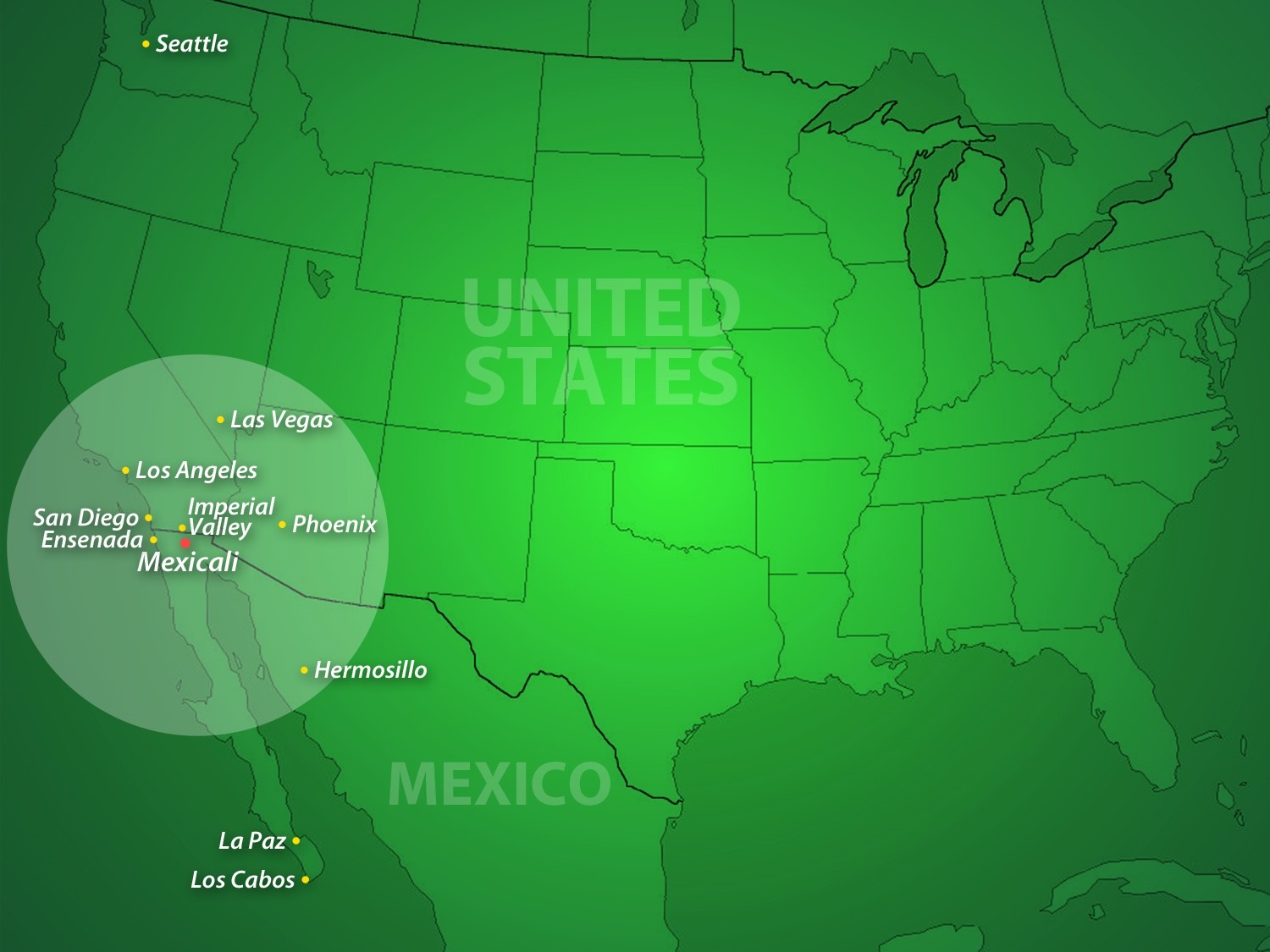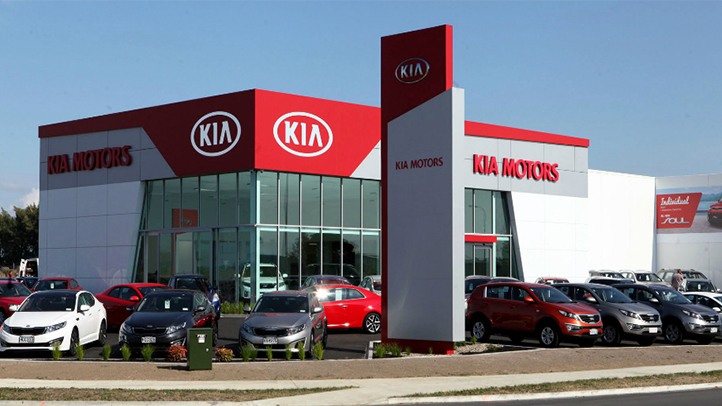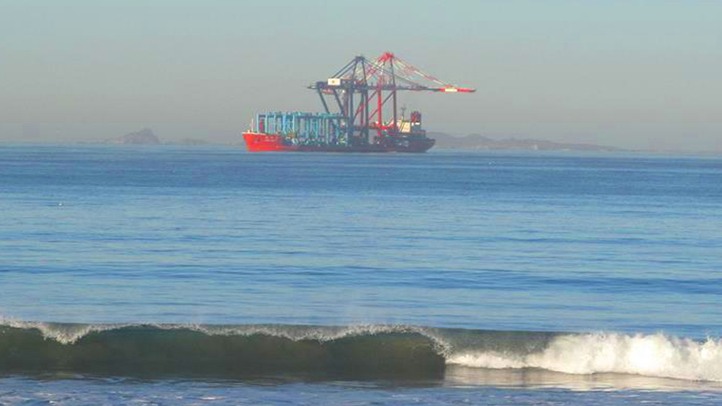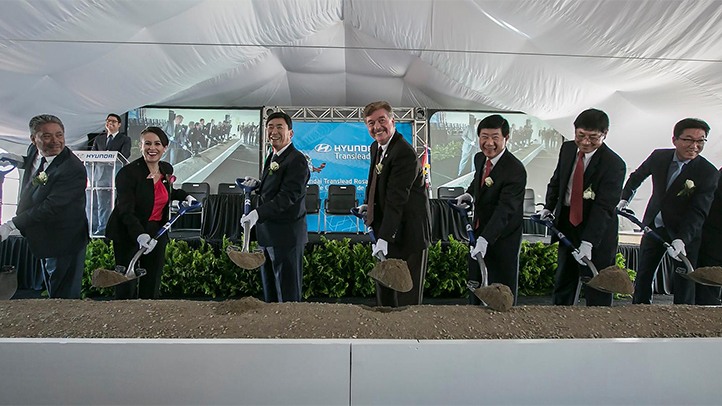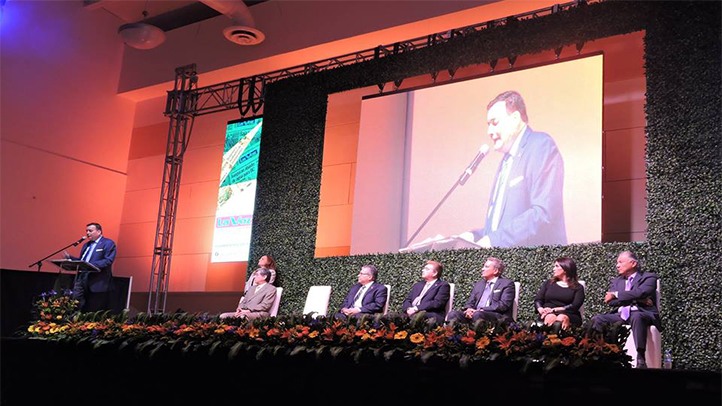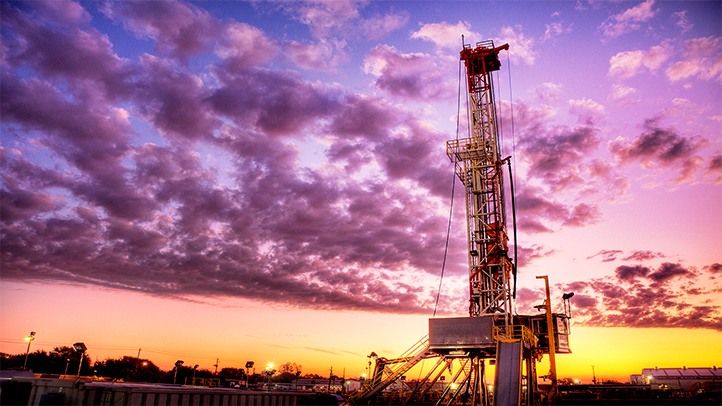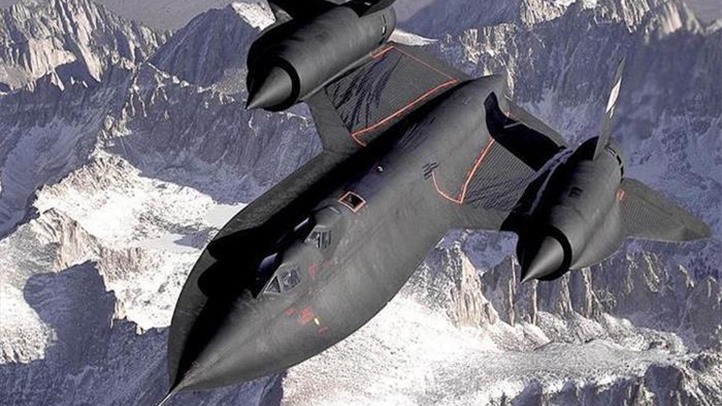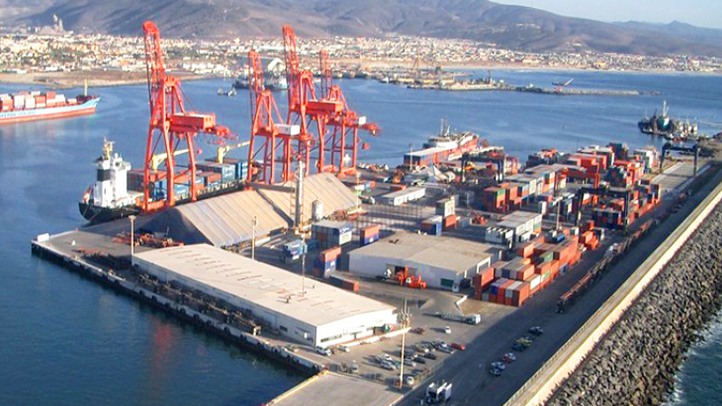We have been asked again and again, what are our industrial location advantages compared to other geographical regions when considering Mexico as a location for manufacturing.
This is a truly Mega Region location: California, Nevada, Arizona, State of Washington, Sonora, Baja California and Baja California South; a market with a population of 62 million of inhabitants.
Some facts, California could be considered as the 5th Economy in the World.
Arizona has 1,200 Aerospace Industries making home there.
In Automotive Industry, Ford, Toyota, Kenworth, Hyundai, CCN Group, Tesla, Honeywell among others, have established manufacturing facilities at this region.
So, it is a simple answer; a top on the list advantages is that Mexicali is located next to California but in middle of a Strong Economic Community!
A fresh beginning
Index Mexicali has elected Salvador Maese as President of the International Manufacturers Association of Mexicali (Index), Salvador is the Human Relations Manager for Newell Rubbermaid Mexicali Plant.
Index will be in hands of an experienced Maquiladora expert.
Congratulations and best of luck to Salvador from the 37 Corporations located in PIMSA.
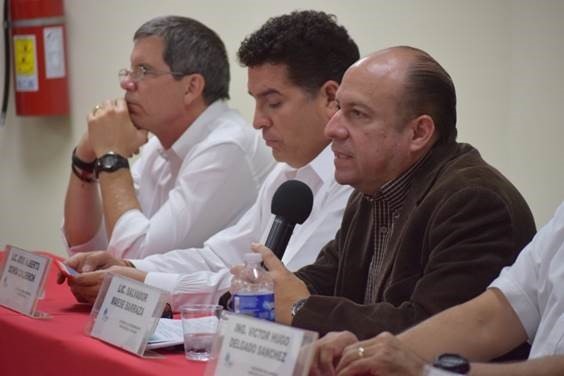
Salvador will take office on January 2016.
In regular annual meeting of members Index Mexicali, Salvador Maese was elected as Chairman of the Board of Index for the period 2016-17. According to the protocol, the current Secretary of the Board, Victor Hugo Delgado, requested the vote of those present, being Maese who got the majority of votes and will be taking office on the first of January 2016.
In this regard a detailed finance report of the Association of Maquiladoras was presented by Manuel Euyoqui, treasurer of the Board, this report was reviewed and approved by the general managers present at the Assembly of Members.
As part of his work proposal, the president-elect noted the importance of giving the right importance to human talent. Another aim will be to position the leadership of IMMEX companies in the economic model of Mexicali and Baja California as well as achieving expand the competitiveness of companies with schemes that provide a stable regulatory framework and long-term legal certainty.
The public reposition of the export manufacturing sector to the three levels of government, business associations and community in general has been a central task since Sandoval González administration and the new president-elect has decided to include this task to its strategy towards 2016.
Regarding the management and lobbying on issues such as tax, foreign trade and social security the aim will to strengthen the service offered by Index Mexicali to their members, so “we need to professionalize the services we provide to our members to be of better quality” noted Maese who also said he will work to obtain ISO-9002 certification.
Continuing policies of National Index related to supplier development, President-elect noted that federal and state resources will be managed to boost productivity and competitiveness of export manufacturing companies through a local supplier chain specialized
Salvador is currently Director of Human Resources of Newell Rubbermaid in Mexico, he has 25 years of experience in the manufacturing industry.
He was vice president of the Board of Mexicali Index 2014-15, current director of the National Convention of Index and has participated as national advisor of this agency.
Exitos Salvador!
The auto maker’s sales are on track to beat its 2015 target.
Kia Motors México has announced the opening of 25 new dealerships, an investment of more than US $50 million, adding to the 21 it opened in 10 major cities in July.
By the end of October, the South Korean auto maker had sold 6,659 vehicles since then, suggesting it will easily beat its target of 7,000.
The company’s Mexico sales manager suggested that the opening of 46 dealerships in less than a year was a record in Mexican automotive history. Tae Jin Park also said Kia Motors now has a presence in 85% of the market.
Its July sales totaled 1,499 vehicles, beating BMW, Mercedes-Benz and Suzuki, and the numbers have been increasing steadily since, hitting 1,829 units in October.
Kia is currently offering its Forte compact sedan and Sportage and Sorento SUVs in Mexico, but next year will add the Optima mid-size sedan to the list.
The company anticipates having 65 dealers by 2017.
Kia will begin manufacturing vehicles in Mexico next May when its new assembly plant in Nuevo León is scheduled to begin production.
Cars made in Mexico can be sold throughout the Americas without paying duties because the North American country has open trade packs with its neighbors.
Source: Mexico News Daily
The Super Post Panamax rises to a height of 42 meters, a reach of 22 rows and load capacity of 41 tons in container and 80 tons in special loads.
Ensenada, Baja California, Mexico
November, 2015

With an investment of 10 million dollars, weighing approximately 400 thousand tons and the capacity to accommodate vessels with among 11 000 to 14 000 containers, arrived to Ensenada a Super Post Panamax.
Javier Rodriguez, General Manager of Hutchison Port Holdings (HPH), said that the crane has a reach of 22 rows and a load capacity of 41 tons in container to 80 tons in special loads.
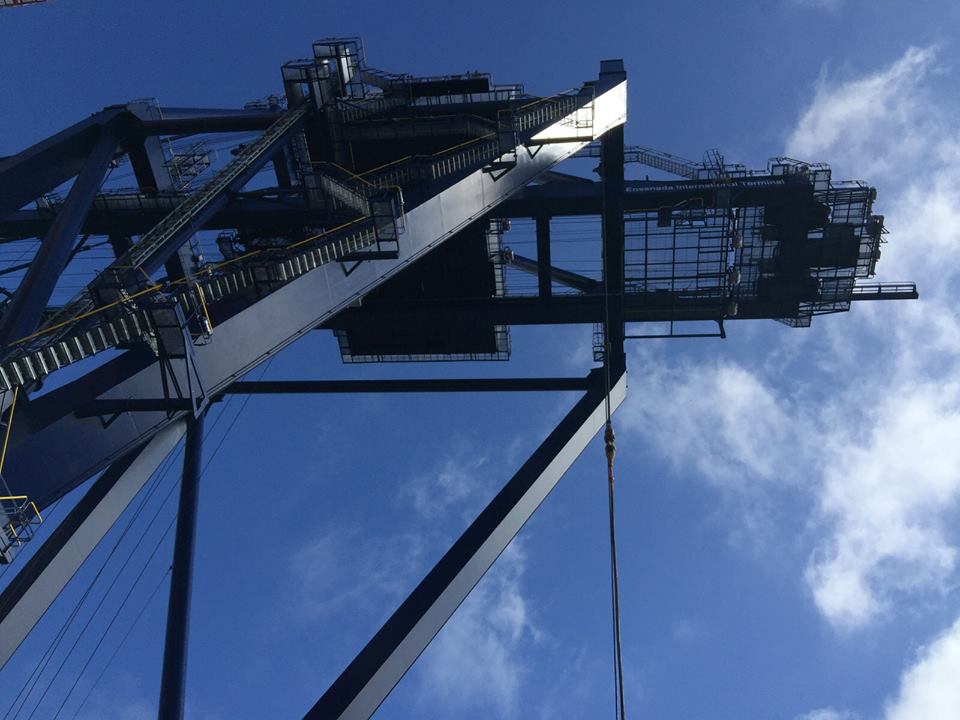
Manufactured by Shanghai Zhenhua Heavy Industries Co. LTD, in a period of approximately one year, the equipment has the most advanced technology in electrical systems, mechanical and electronic control, explained Rodriguez.
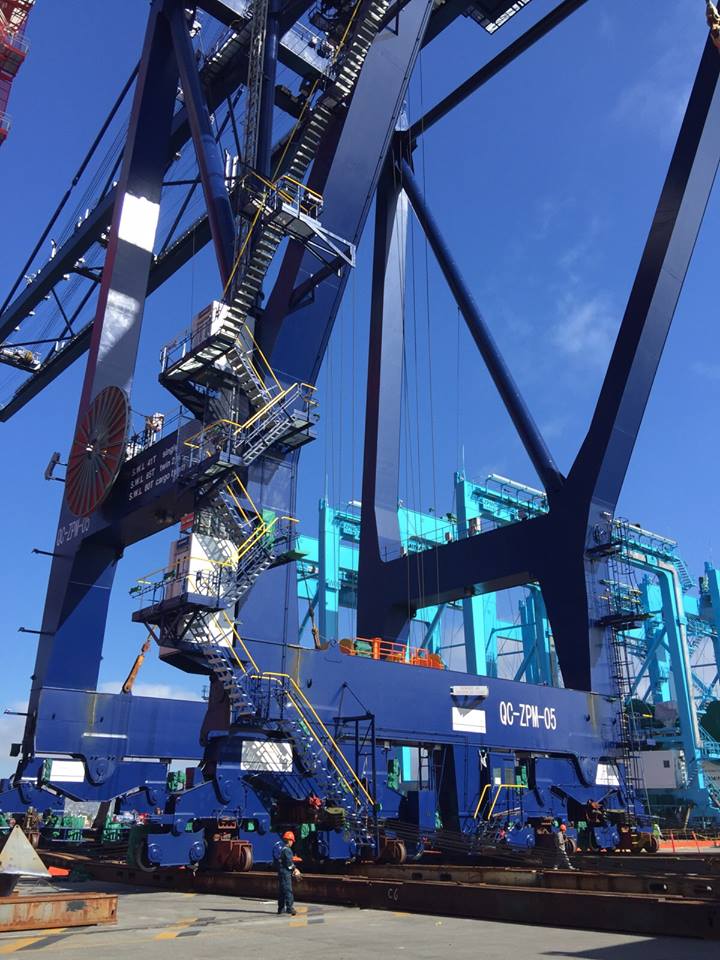
Also, its lifting capacity is up to 42 meters above the wharf at a speed of 80 meters per minute with load and 170 meters per minute without load.
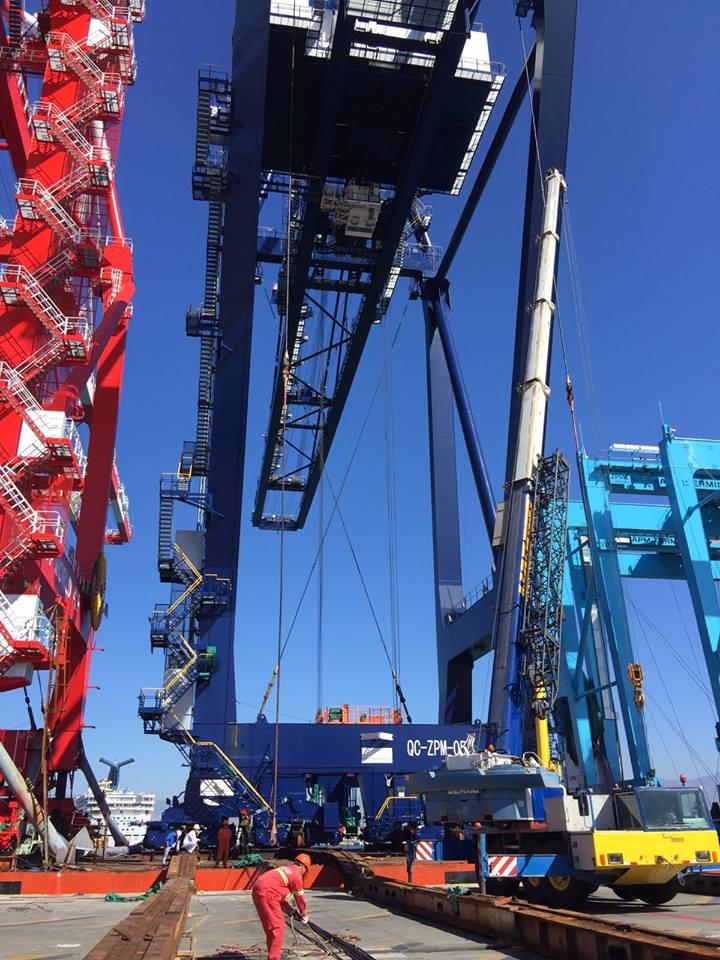
This equipment will allow to attend Super Post Panamax ships, the largest currently sailing.

BOOSTING PORT LOGISTICS
The executive noted that Ensenada International Terminal (EIT) has a dynamic capacity of up to 300,000 containers of 20 ft.
“With the acquisition of this new equipment, the terminal will offer a more efficient operation, which will reaffirm its position as the best logistic alternative in the region”.
Javier Rodriguez said that, alongside with this investment, the Secretariat of Communications and Transportation (SCT), will develop the extension of a breakwater in the port of Ensenada deflectors and port facilities with drafts of up to 18 meters, which will allow to receive latest generations of ships.
“Investing in the most technologically advanced equipment, and the recent certification of Ensenada as the first green port in the country, EIT has established as one of the major ports of the Mexican Port System” said.
Source: El Vigía
PLAYAS DE ROSARITO, BAJA CALIFORNIA
October 2015
Chassis for trucks will be produced in this new plant that will create 2,000 new jobs.
The Korean Company Hyundai, invested US$84 million for the construction of its new plant in Baja California, where chassis for trucks will be produced.

This plant will create 2,000 new jobs. In this regard, Governor Francisco Vega de Lamadrid remarked that Baja California generates 9.6% of Mexico´s employment and ranks first nationally in jobs generation.
It is expected that the factory starts operations by June 2016. Kyoung Soo Lee, Hyundai Translead´s President, indicated that, with this project, the corporate will seek to grant a better life quality to its workers.
Source: Border-NOW
PIMSA’s Francisco Fiorentini opening of Foro Eleva, a Mexicali Business Community effort to induced residents of the community to improve the city, to innovate, to build confidence of a better Mexicali.
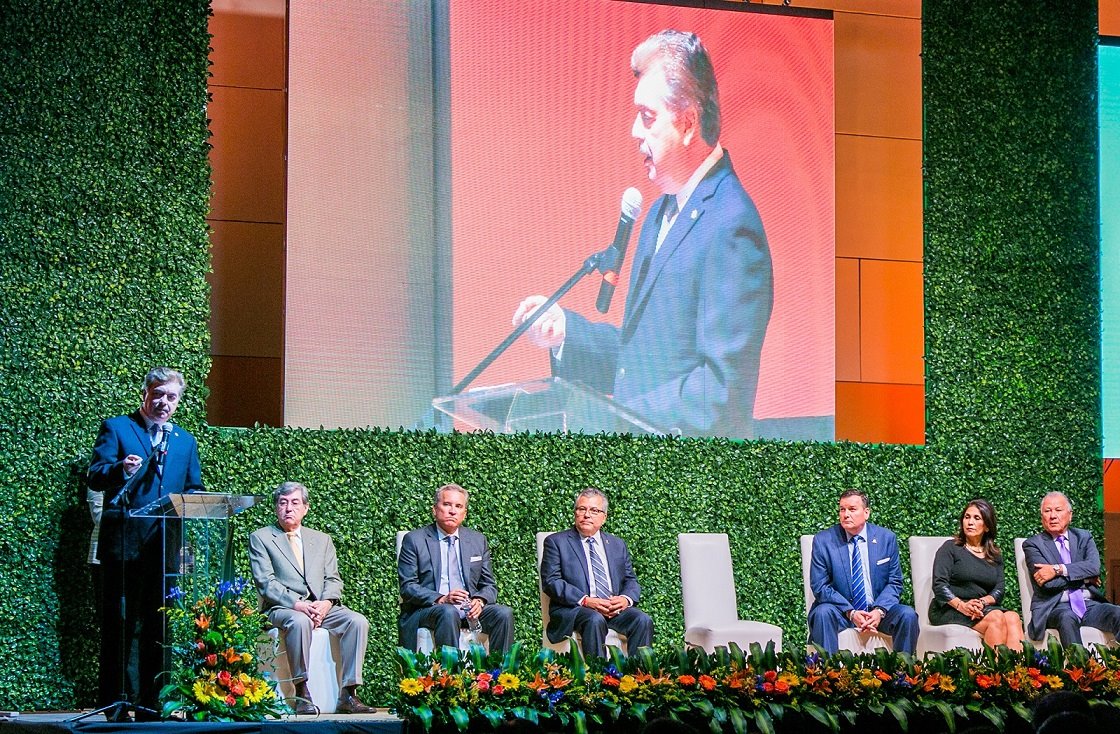
Governor Francisco Vega of Baja California, inaugurated Foro Eleva Mexicali, translates, raise Mexicali!

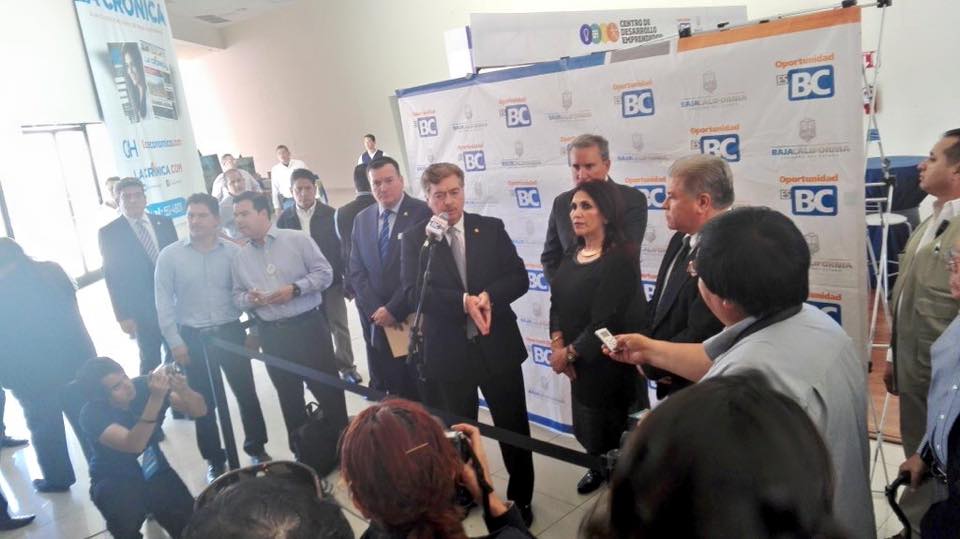
Our congratulations to Coparmex and Rosa Isela Ibarra, coordinator of this grand opportunity and thank you PIMSA Companies for your support!
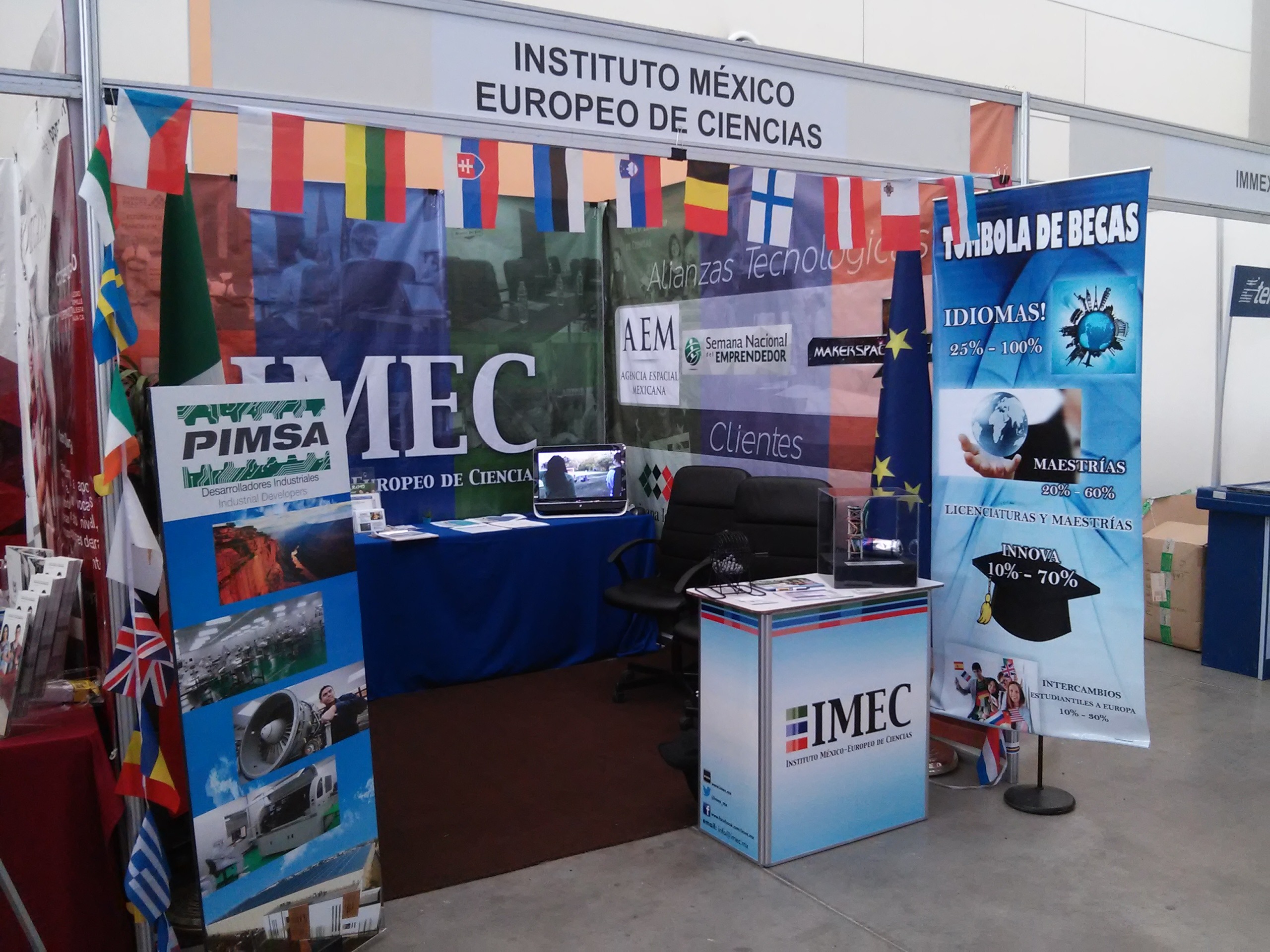
IMEC Mexico – European Science Institute, specialists in foreign training programs, present during the event.
PIMSA Momentum!
With three plants and 25 years operating in Mexicali, Martech Medical exports catheters and several world class products.
In constant pursuit of product quality and safety for customers and end users, Martech Medical Products has been consolidated as one of the most experienced medical companies and leader in international certifications. Alejandro Sanchez, Director Quality, said that products manufactured in their three plants reach countries such as Switzerland, Germany, Brazil, Canada, Japan, among others, and successfully meet all regulations.
Martech Medical already has twenty five years of operations in Mexicali, state capital of Baja California, and currently provides work for nearly eleven hundred workers. Its main feature is the competitive advantage that they offer to their customers abroad, since they as work under the “contract manufacturing” being able to produce different products depending on the needs of its customers, all with a strict regime of certifications.
Currently in Mexico they are regulated by COFEPRIS under Mexican Official Standard NOM-241 SSA1-2012 and have the ISO 13485 (quality standard for medical products), said Alejandro Sanchez, who also explained that for a medical industry, it is crucial to ensure safety and quality in the products as lives of people depend on them, therefore, they perform rigorous quality testing of each of the products processed at Martech Medical.

Martech Medical constantly approves evaluations or audits received in their facilities, these are important because allow them to continue their export activity and avoid mistakes in production.
Among the issues reviewed the auditors are: quality system documentation, implementation of quality management systems, processes installed meet the requirements of the quality system and verify environmental control specifications of the facilities.
“Regulations request the product to be safe for the patient and for who is using it, but also to be effective,” said Martech’s leader of quality, recalling that thanks to this commitment they have been recognized for several of its clients as “high quality suppliers.”
Martech Medical Products manufactures surgical catheters, for hemodialysis use, among other products. Today complies with at least seven medical certifications among ISO 13485: 2003 in Europe, 21 CFR Part 820 US and Brazilian GMP DRC 16-2013.
Source: Industrial News
NOV has been in Mexicali, under Varco Technologies, since 1984. NOV has over 1,000 total employees in Mexico, but Mexicali is the only location for fabrication operations
MEXICALI, BAJA CALIFORNIA. OCTOBER, 2015
Manufacturing continues to expand in Mexicali. National Oilwell Varco (NOV) late last year completed construction on major expansion to its operations located at one of the industrial areas near the cargo port of entry. With a significant investment, NOV expanded its operations to 540,000 square feet of industrial space, fabricating rigging systems for oil wells throughout the world.
The expansion came quickly. NOV announced its decision to expand in January 2014. By the end of October 2014, the facility was fully operational.
“Mexicali was always the only choice in Mexico for NOV,” said John Unruh, Director of Operations for NOV. “The proximity to the US market and quality labor pool in Mexicali made the decision easy for the corporation.”
NOV is a global corporation based in Houston, Texas, manufacturing, repairing, and supplying equipment and components used for oil and gas drilling operations, oilfield services, and supply chain services for oil and gas production. NOV has been in Mexicali, under Varco Technologies, since 1984. NOV has over 1,000 total employees in Mexico, but Mexicali is the only location for fabrication operations.
“The expansion of NOV is very exciting. NOV has enjoyed our skilled workforce for over 30 years and furthered its commitment with a significant investment in our city,” said Jaime Diaz, Mayor of Mexicali. “Mexicali and NOV are partners for the future growth and continuation of the oil and gas industry in the world.”
The new facility provides fabrication services for land rigging systems, including structural components used in West Texas, the Gulf of Mexico area, and even in the Middle East. NOV-Mexicali in Mexico manufactures a comprehensive range of capital equipment. In addition to fabrication of rigging systems, NOV-Mexicali also provides assembly services and production of parts and consumables for oil drilling systems.
Source: prweb
| Ever since the Wright Brothers managed to get their Wright flyer airborne in 1903, the history of aviation has been dotted with a number of fascinating, landmark moments. This list will run through 14 of the most innovative, important and incredible airplanes ever to grace the skies, and tell the remarkable stories that made them such trailblazing groundbreakers. |
| 1. Wright Flyer The first plane to successfully take flight |
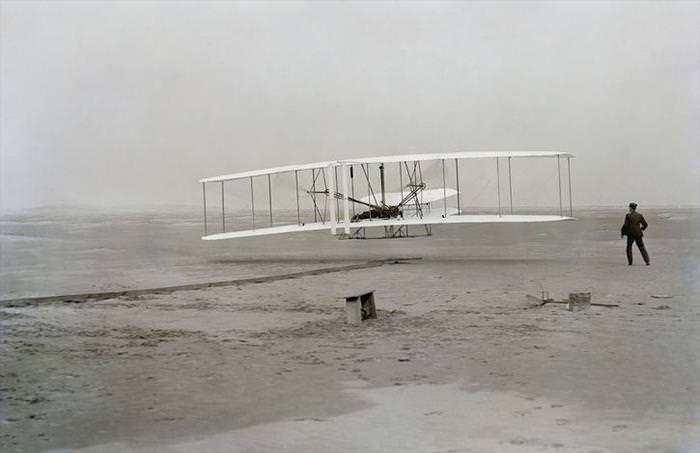 |
| The Wright Flyer is famous for being the first airplane to successfully take flight. Designed and built by pioneering inventors and entrepreneurs Orville and Wilbur Wright, it achieved its feat on the beaches of Kitty Hawk, when Orville Wright piloted the airborne plane for 12 short seconds, covering 120 feet. The flight may have been short, but it was to prove one of the moments of the century, and the brothers toured with their plane to show off their achievements to skeptical audiences throughout the world. It was during this tour that they flew about Le Mans in France and kick-started an aviation revolution across Europe that was to change the world. |
| 2. Lockheed SR-71 Blackbird The fastest airplane ever built |
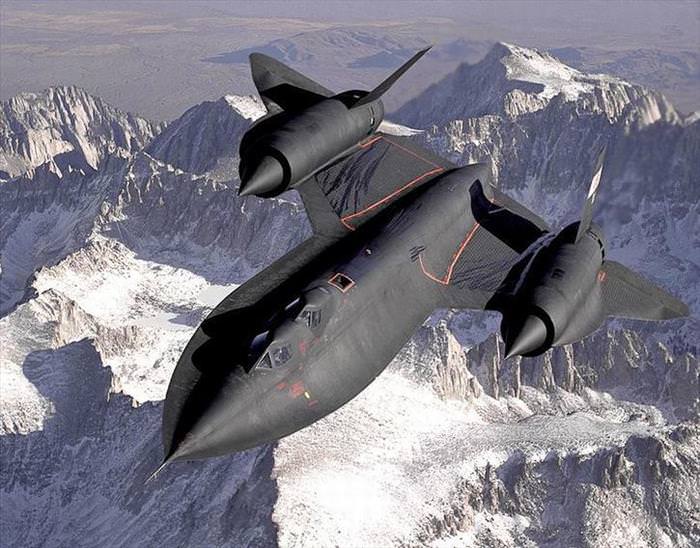 |
| The Lockheed SR71 Blackbird was a long range, strategic reconnaissance aircraft operated by the US Air Force. Despite the fact that the Blackbird last flew in 1999, it still holds the record for the fastest flight speed ever recorded by an air-breathing manned aircraft at 2,193.2mph (3,529kph), a record that it has held – remarkably – since 1976. It once flew from London to New York (a distance of 3461.53 miles or 5,570.79km) in a ridiculously fast 1 hour 54 minutes in 1972, but Incredible speed was not the Blackbird’s only selling point. Throughout its commission it was also the highest flying plane in the world, capable of flying at an altitude of 85,069 feet or 25,929m. Of course, these attributes were not just for show, they helped the plane carry out crucial reconnaissance missions without detection, and evade missile fire when under attack. |
| 3. Spitfire The only plane to be manufactured throughout World War II |
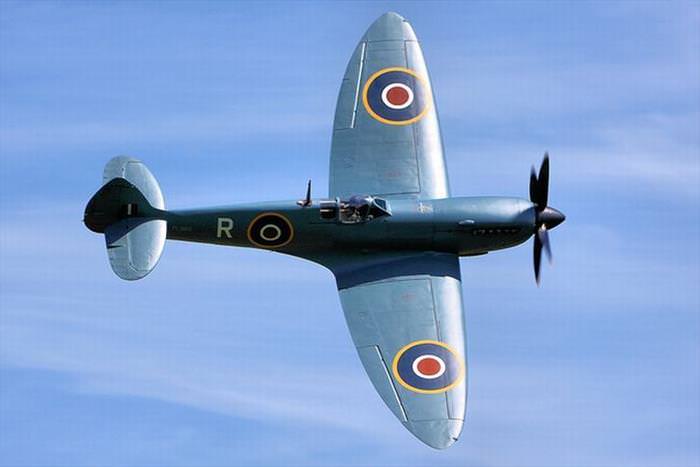 |
| The Supermarine Spitfire was used extensively by the British Royal Air Force and other Allied countries during and beyond World War II. It has achieved iconic status for its role during the Battle of Britain when used by heavily outnumbered allied pilots to repel invaders from the German Luftwaffe. It was also produced in greater numbers than any other British aircraft, and was the only plane to be continuously manufactured throughout the war. It remained in production until 1954. |
| 4. Benoist XIV The first plane to fly a paying passenger |
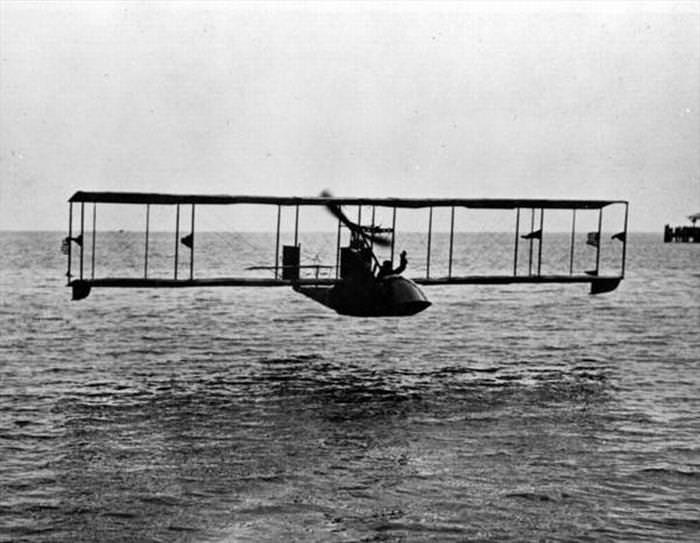 The Wright Brothers had proved that man’s dream of flying could become reality, but it was left to a tiny plane called the Benoist XIV to bring that dream to the paying market. The small plane was specifically designed in the hope of carrying passengers, but suffered problems in its early days. The summer of 1913 saw its first attempts to establish itself as a passenger plane, but the plan failed and the aircraft was a wrecked. It wasn’t until the winter of 1914 that the designer Thomas Benoist partnered with businessman Percival Fansler to offer commercial flights between the Florida cities of St Petersburg and Tampa. Finally, on January 10th 1914 pilot Tony Jannus flew former St Petersburg mayor Abram C. Pheil across the route for the princely sum of $400.00. Although regular flights were priced at $5.00, Pheil had paid more at auction for the honor of being the very first passenger. The Wright Brothers had proved that man’s dream of flying could become reality, but it was left to a tiny plane called the Benoist XIV to bring that dream to the paying market. The small plane was specifically designed in the hope of carrying passengers, but suffered problems in its early days. The summer of 1913 saw its first attempts to establish itself as a passenger plane, but the plan failed and the aircraft was a wrecked. It wasn’t until the winter of 1914 that the designer Thomas Benoist partnered with businessman Percival Fansler to offer commercial flights between the Florida cities of St Petersburg and Tampa. Finally, on January 10th 1914 pilot Tony Jannus flew former St Petersburg mayor Abram C. Pheil across the route for the princely sum of $400.00. Although regular flights were priced at $5.00, Pheil had paid more at auction for the honor of being the very first passenger. |
| 5. de Havilland Comet The first commercial jetliner |
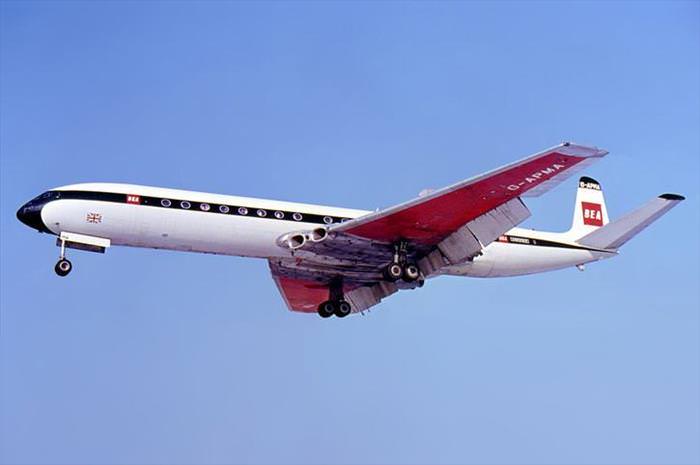 |
| Image: wikicommons |
| The de Havilland Comet is regarded as both a trailblazer and a tragedy by aviation historians. It was the first jet-powered passenger plane, capable of cruising at high altitudes – and brought with it new levels of comfort and fresh possibilities for passenger flights. However, the Comet was beset by design faults leading to a number of awful accidents, including three incidents in 1954 where planes broke up in mid-air. The tragedies ushered in a new era of extensive accident investigation and informed future aircraft design testing as engineers learned from the mistakes made by the Comet’s designers, including the use of catastrophically inadequate airframes. |
| 6. Messerschmitt Me 262 The first jet-powered military plane |
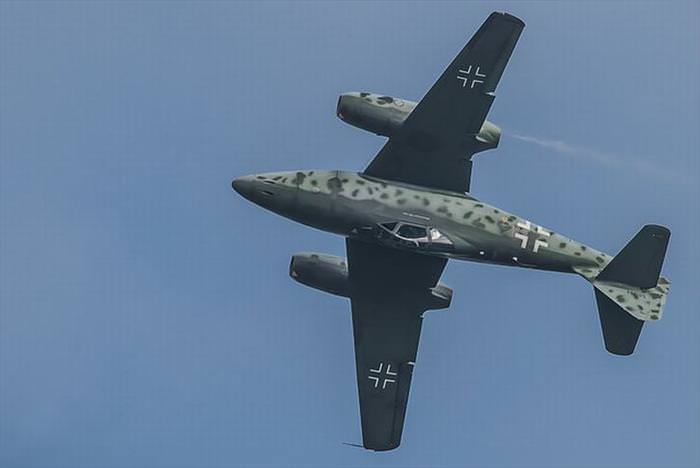 |
| The German built Messerschmitt Me 262 become the first jet-powered fighter aircraft when it was first commissioned in 1942, bolstering the Luftwaffe fleet in the middle of World War II. Allied attacks on fuel supplies and problems with the reliability of the engines meant that its impact on the direction of the War was not as great as the German military hoped, and it was not in production for very long. However, its jet engines offered a degree of maneuverability and speed that was not replicated elsewhere at the time, and its design would inspire future military aircraft into the jet-powered age. |
| 7. Gossamer Albatross The first human powered aircraft to cross the English Channel |
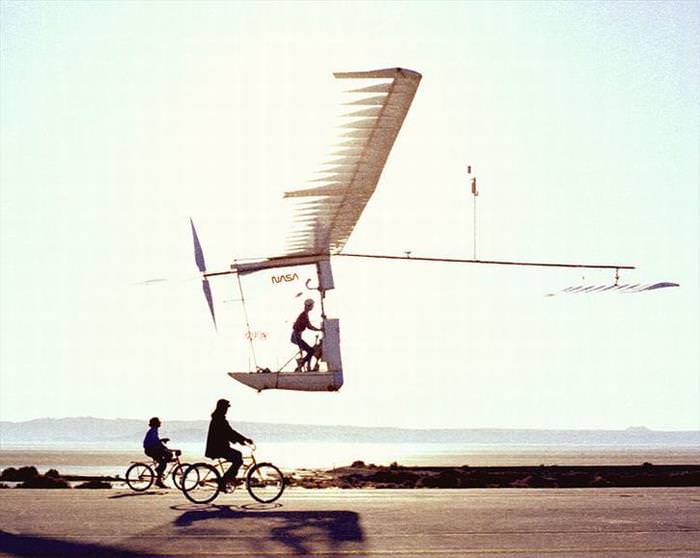 |
| At first glance, you could be forgiven for thinking that the Gossamer Albatross was the product of aviation experimentation in the early 20th century. However, it was actually designed and built in the late 1970s. Paul B. McGready was the man behind the concept, and the Albatross was intended as a man-powered craft capable of long distance travel. On June 12th 1979, it achieved its ultimate goal when amateur cyclist and keen pilot Bryan Allen successfully flew it from England to France in 2 hours 49 minutes, reaching a top speed of 18mph. The super-lightweight composition of the Albatross has gone on to inspire the design of solar powered electric aircraft seen today. |
| 8. Cirrus SR22 The first plane to have a life-saving ‘whole-airplane parachute’ |
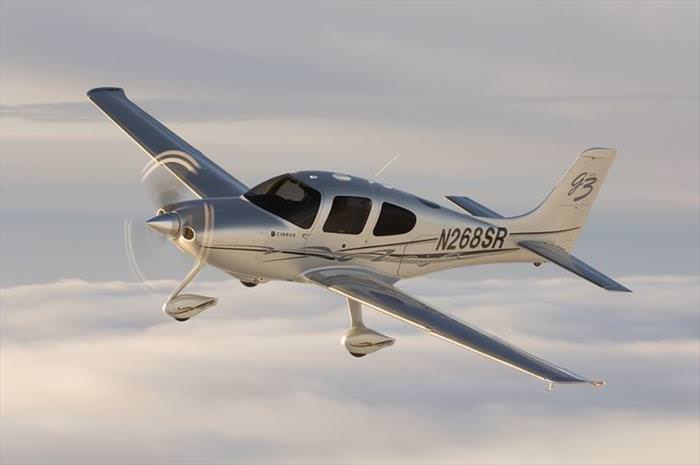 |
| The Cirrus SR22 has been the best selling single-engine, four-seater aircraft since it was introduced in 2001 – and for good reason. It features a composite construction fitted with a parachute that works on the entire plane. The parachute system has saved well over 100 lives over the course of the Cirrus’s production run, and has given confidence to budding pilots who can take the controls without the same levels of danger associated with other light aircraft. 19 year old Ryan Campbell flew in a Cirrus when he became the youngest pilot to fly around the world in 2014. |
| 9. Concorde Brought supersonic flights to the masses |
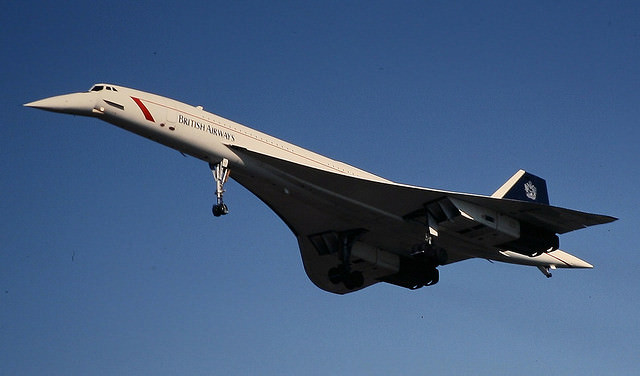 |
| Concorde is one of only two supersonic jets to ever carry commercial passengers and became synonymous with luxury travel and wealth. It first flew in 1969, but was not actually the first of its type – the Soviet built Tupolev Tu-144 beat it into flight by two months and the two types of plane were to be pitted in a commercial battle for years to follow. However, it was Concorde’s distinctive design that became best known throughout most of the world, and it remains an iconic symbol of aviation history today, even though it took its last flight (in a blaze of publicity) in 2003. |
| 10. General Atomics MQ-1 Predator The first military ‘drone’ |
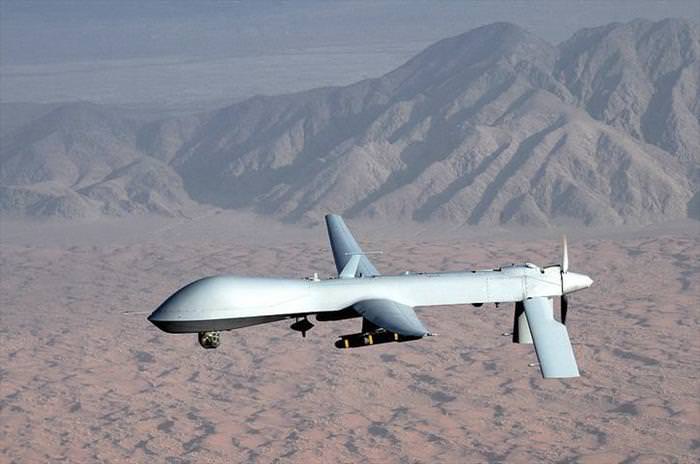 |
| The MQ-1 Predator was the first ‘unmanned aerial vehicle’ (more commonly known as ‘drone’) to be used in conflict. It is capable of being piloted remotely for up to 21 hours, monitoring its target and completing missions before returning to base. The plane has been used on reconnaissance missions primarily but is also capable of firing missiles, making it a trailblazer for a new era of drone warfare that is changing the face of military conflict. |
| 11. Blériot XI The first plane to cross the English Channel |
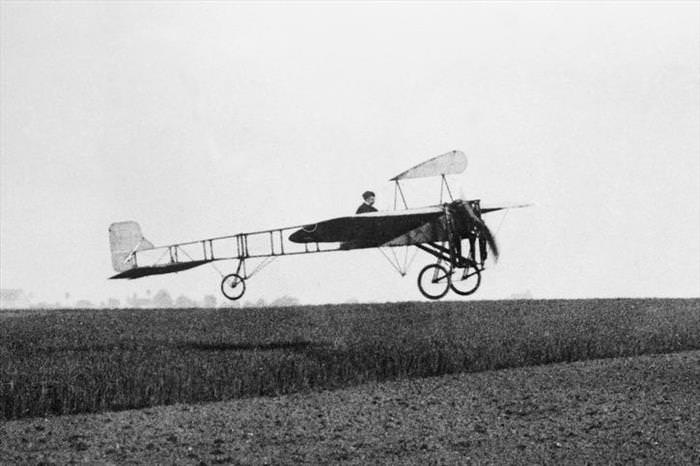 |
| The Blériot XI was designed and piloted by Frenchman Louis Blériot, becoming the first aircraft to successfully fly the 22 miles of the English channel on July 25th 1909. The accomplishment was one of the foremost achievements of the ‘pioneer era’ of aviation in the early 20th century, and sees Blériot take his place alongside the likes of the Wright Brothers as one of the most influential innovators of early aircraft design. His achievements changed the way aviation was viewed and inspired the famous ‘Britain is no longer an island’ headline from British newspaper the Daily Express once news of the successful Channel crossing broke. |
| 12. Boeing 747 The original high passenger capacity ‘Jumbo Jet’ |
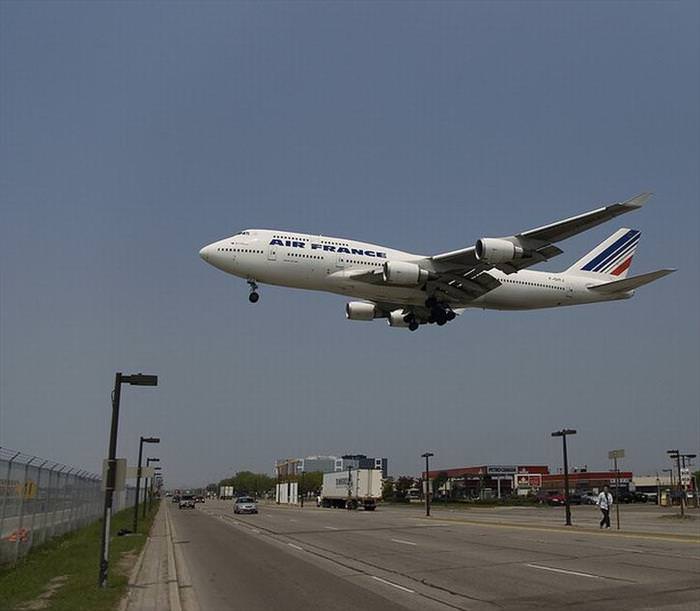 |
| The Boeing 747 was the original ‘jumbo jet’ built to transport more passengers than ever to faraway vacations. Much of the increase was provided by the ‘upper deck’, typically reserved for first class passengers. For 37 years it held the record for passenger capacity, after being originally introduced in 1970, and its design was even more impressive considering engineers had to hand-draw 75,000 technical sketches in the days before computers could do the job for them. The design was so good, in fact, that further advancements stalled and commercial passenger aviation remained unchanged for a number of years. |
| 13. Bell X-1 The first aircraft to break the speed of sound |
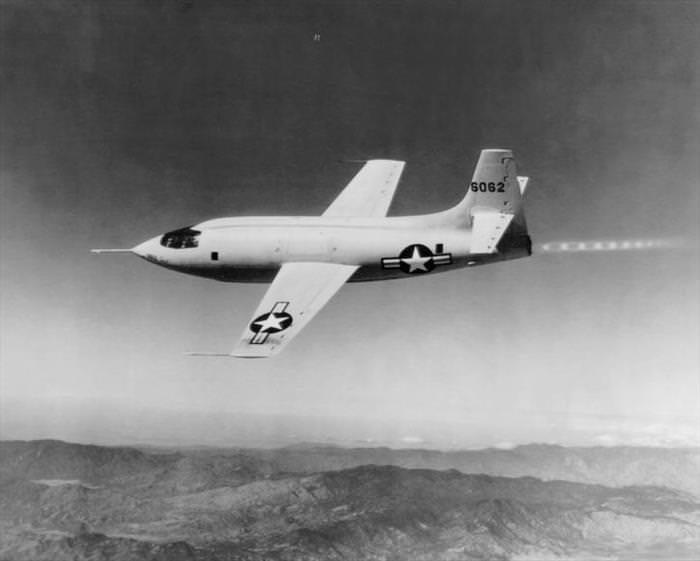 |
| Designed in 1944 and built in 1945, the Bell X-1 was the product of a research experiment by the National Advisory Committee for Aeronautics and the US Air Force. It was intended to break the sound barrier, and it did, achieving the first Mach 1 flight ever on October 14th 1947, in a plane pilot Chuck Yeager named Glamorous Glennisafter his wife. The legacy of the Bell X-1 was vast as the research techniques informed future designs of supersonic aircraft and the flight data was crucial to American military design in the latter half of the 20th century. |
| 14. Solar ImpulseThe airplane powered by the sun |
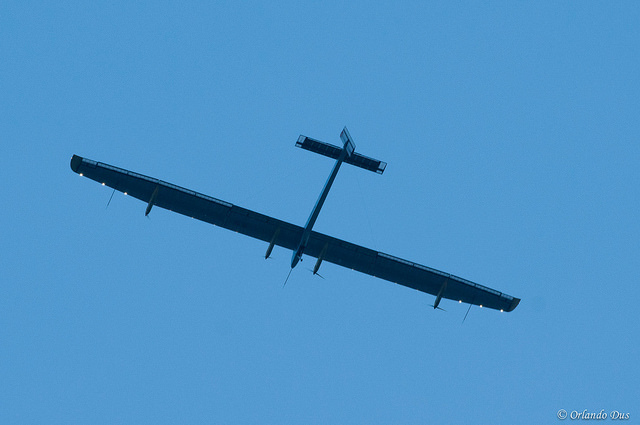
Solar Impulse represents the fruits of a Swiss led project to build a solar powered aircraft capable of flying long distances. The project has been in development since 2003 and has achieved a number of successes, included manned test flights, a continental flight across the USA and a re-design that saw the development of Solar Impulse 2, a second model that is currently on a round-the-world trip conducted in 13 stages over two years. As of the 23rd of October 2015, Solar Impulse 2 has completed 8 of those stages and sits in Hawaii ready to complete the final 5 stages of its journey back to Abu Dhabi, from where its journey began in March 2015. |
Source: BaBaMail
A NEW CONTAINER CRANE FOR PORT OF ENSENADA, OUR CONGRATULATIONS TO HECTOR BAUTISTA, PORT DIRECTOR, NO DOUBT, THE PORT OF ENSENADA CONTINUES TO BE AN ADDITION TO OUR MANUFACTURING LOGISTIC INFRASTRUCTURE.
Ensenada International Terminal (EIT) of multiple use, invests 10 million dollars in a new wharf crane manufactured by the company Shanghai Zhenhua Heavy Industries Co. LTD. The crane had a construction period of one year and is estimated to arrive to the port of Ensenada on November 13 this year.
The equipment has the latest technology in electrical systems, mechanical and electronic control, which represents a lifting speed of 80 meters per minute with load and 170 meters per minute if empty.
“This new crane gives us confidence that EIT can receive any type of ships efficiently for the production line on time,” said Jovan Angel Vargas Manager / Supply Chain & Logistics Samsung SDS America “. So far, the service has been excellent and this acquisition inspires more confidence to users. ”
Among its features has a length of 60 meters which is equivalent to a reaching capacity of 22 lines of containers, with a capacity of 42 meters over dock, which will allow to support the largest ships currently sailing, the Super Post Panamax.
The crane has a 41 tons capacity in container and 80 tons in special loads, the structure weighs approximately 1,400 tons and was designed especially for the separation of rails at EIT (15.24 meters) which makes it unique in its kind.
“In addition to investments in the Port Terminal EIT, it was announced in the port of Ensenada the extension of a breakwater, deflectors and Port Facility with up to 18 meters deep that will allow to receive ships, all already under construction,” said Mario David Ruanova and Zarate, President of the Association of Customs Agents of Ensenada.
With the acquisition of this new equipment, Ensenada International Terminal endorses its commitment to the international trade and industry, as it will offer a more efficient operation and to reaffirm the position of EIT as the best logistic alternative in the region, according to the subsidiary Hutchison Port Holdings (HPH) in a statement.
A message from a Customs Brokers Association representative:
The seaport of Ensenada is an instrument, a tool, a facility and source of employment, of fresh currencies to the nation, not only of Ensenada, but the whole State, and the neighbors BCS and Sonora. And beyond, Chihuahua and the Laguna in Torreon where their cotton is exported through this port. Almost 50% of the imports in cargo containers, goes to Tijuana, 35% goes to Mexicali and the rest goes to other States and a minimum stays in Ensenada. In Agricultural Bulks, 100% goes to Mexicali and SLRC, Sonora. Minerals and scrap, etc., almost 100% Ensenada, Tijuana 70% and 30% Mexicali (these percentages vary depending on the season and conditions in international markets and the changes of the international and national economy … this port of Baja California and neighbors, currently has a capacity for double what it currently operates, aided by the dry outer harbor of El Sauzal as a control zone, storage and transfer; capacities that are planned to be increased twice in medium-term, with the expansion of mooring places, more space and capacity and drafts of the port basin, etc.
Regional exporters and importers have in this effective and efficient port a guarantee for their production operations, access to all world markets in the seven seas and unsurpassed COMPETITIVENESS … it’s just a matter of SPONSOR it and participate with their remarks, suggestions and recommendations … We the customs brokers, we are not only its operators in logistics and customs clearance of their goods and merchandise, but its eyes and representatives to the various authorities and operators of cargo and maritime and land transport, and we are here to help them in our agencies and our Customs Brokers Association in aaaens@aaaens.org
Source: T21

